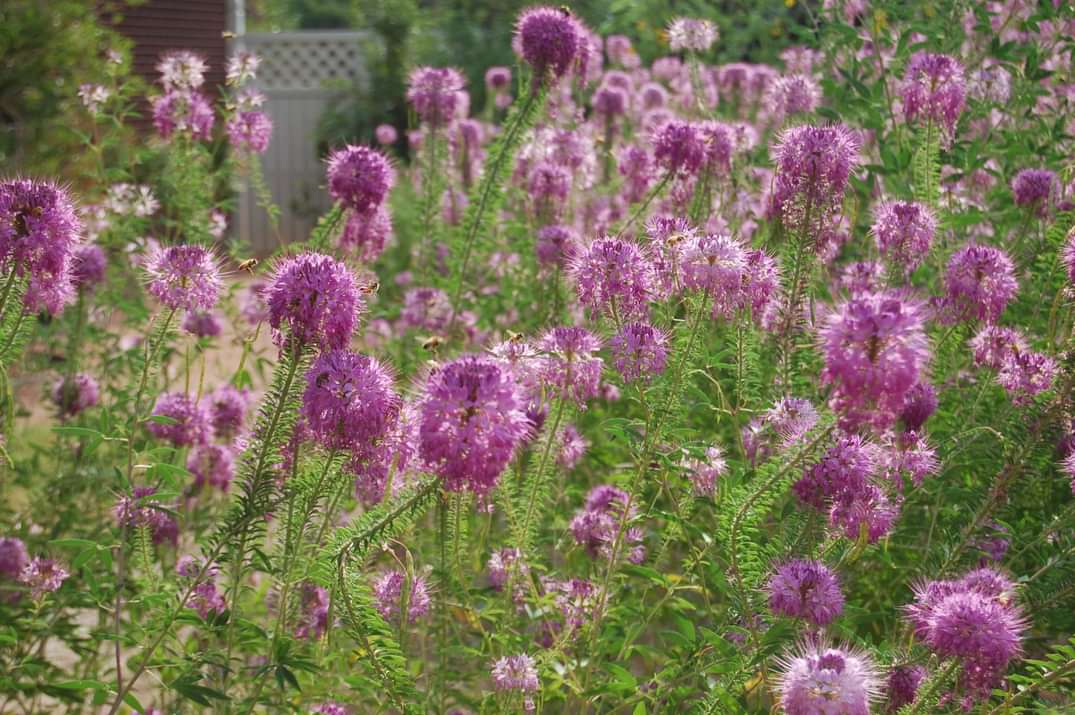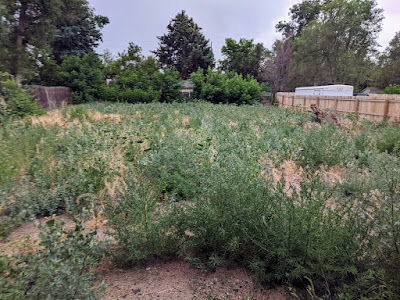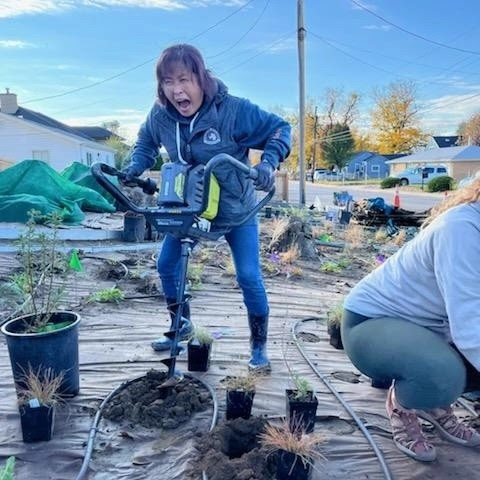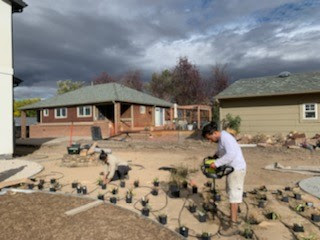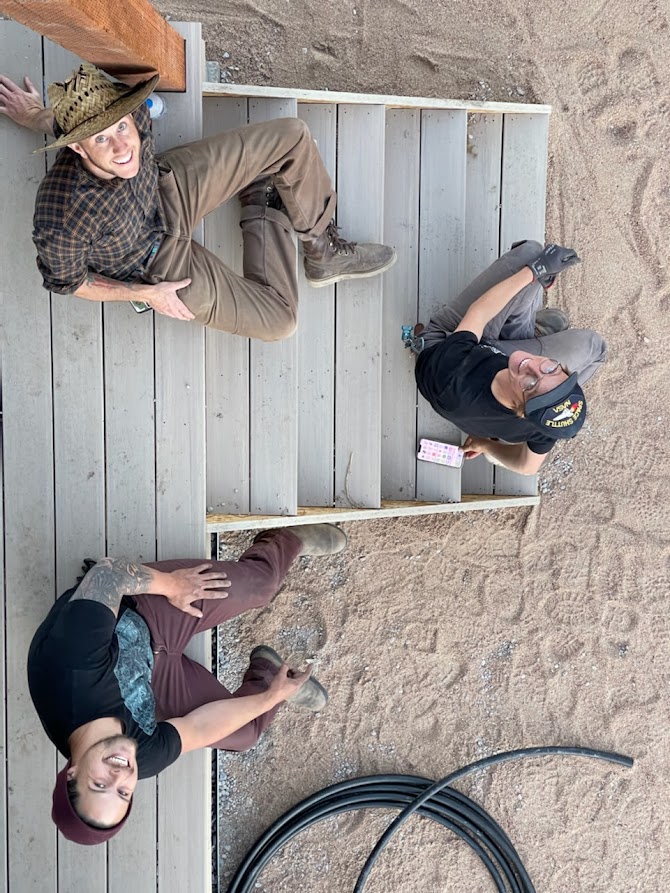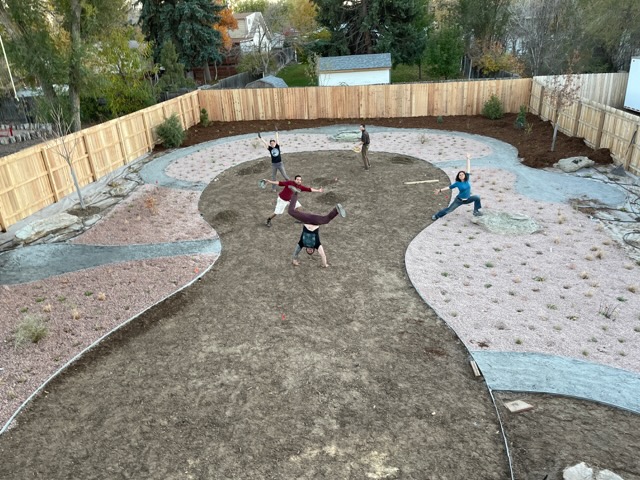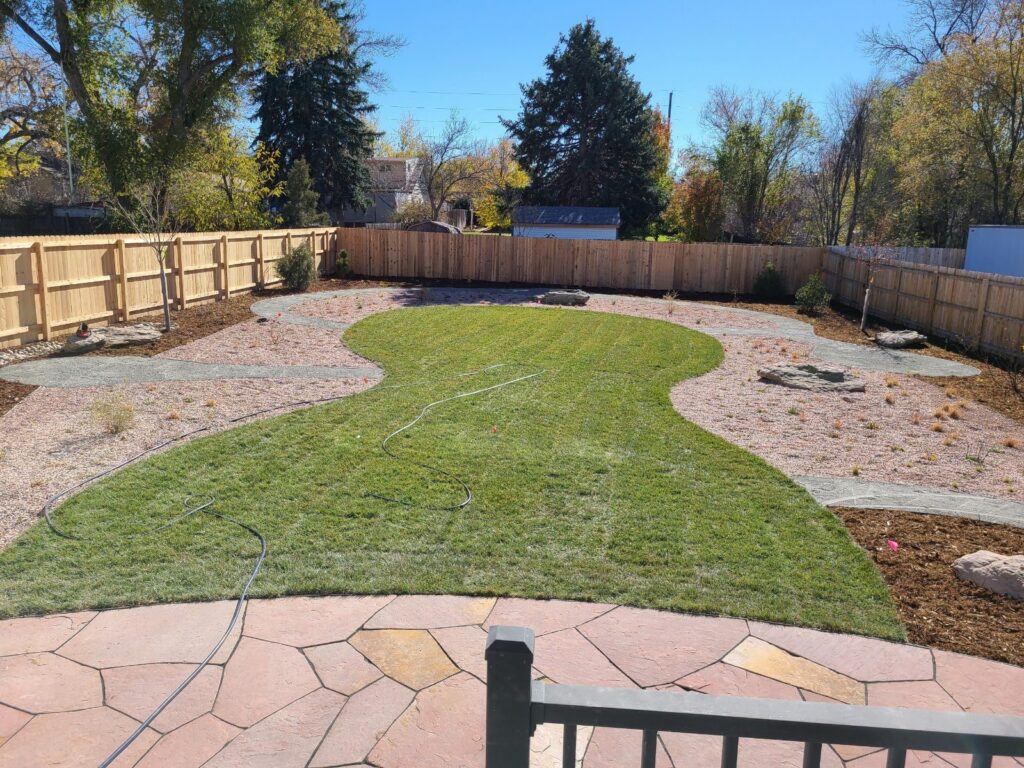
❁ Restore your connection with the land you live on by partnering with nature in your yard
❁ Restore habitat for pollinators and birds by landscaping with native plants and native grass lawns
❁ Restore the soil and watershed through xeriscapes, rain gardens, and other water-wise permaculture practices
❁ Restore your soul in low-maintenance garden oasises that offer food, medicine, and rest.
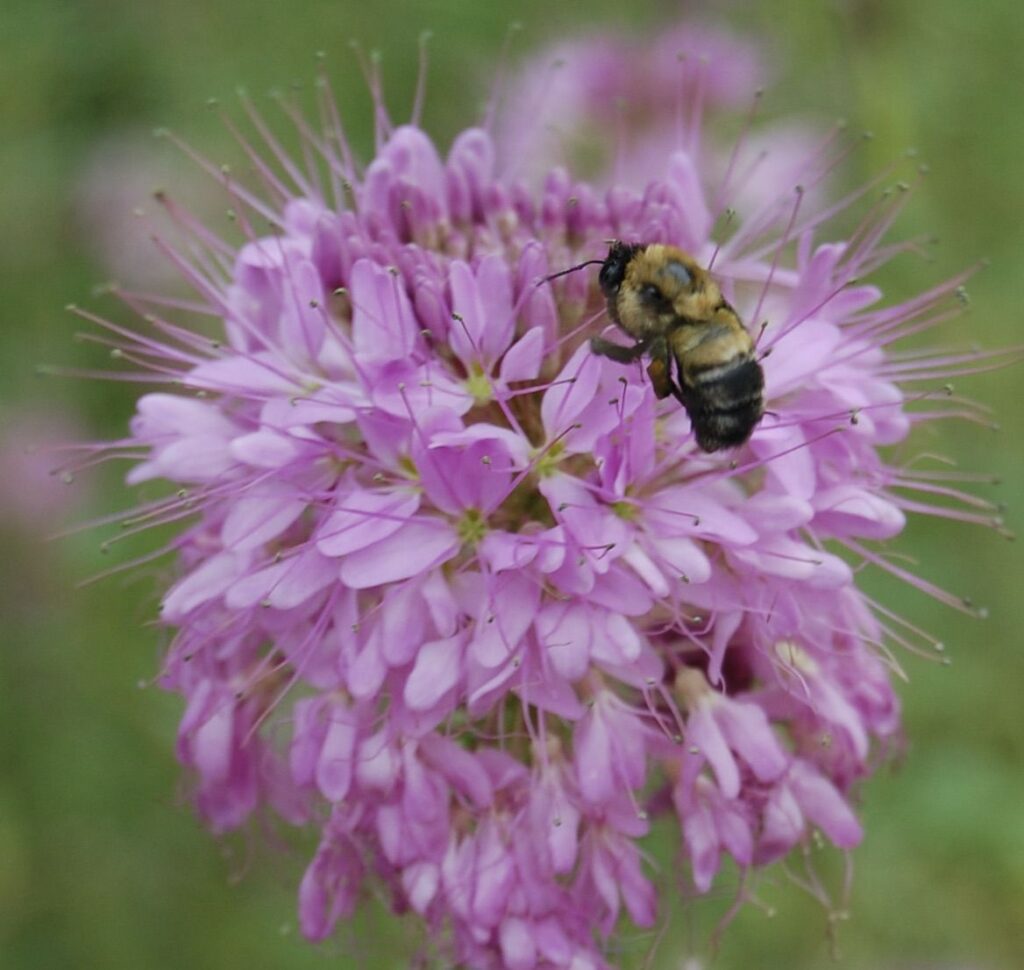
About Restorative Landscape Design:
Hi, I’m Eryn Joy Murphy, the owner of Restorative Landscape Design. I am a Denver-based permaculture designer with a special passion for landscaping with native plants.
I see native plant landscaping as a way to reconnect us to the land we are on. When we make space for the beauty and wonder of Colorado in our own yards, and participate in the interdependent community of plants, birds, and pollinators that want to live here with us….then we start to grow deep roots into our local ecosystem. And, just like Colorado native plants, those deep roots can bring up nourishing waters for us from the depths of the land.
I love this job because it’s meaningful for me, and because I get to work with an amazing group of people. We’re a small team who collaborates with a wider network of contractors, and we are all passionate about ecological landscaping. My personal goal is to make RLD an example of how a business can help both nature and people, which includes living wages for workers; accessible prices for clients; resources for low-income folks; and approaching landscaping as a partnership between people and nature.
We also approach this work as a partnership with our clients. We start the process by asking how you feel in your current yard, and what you’re craving to feel and experience there. The rest of the planning process is a dialogue, where we lead you through the pros/cons, aesthetics, and costs of various options. When it comes to the actual labor, you’re invited to be involved, and to decide exactly what you want our help with.
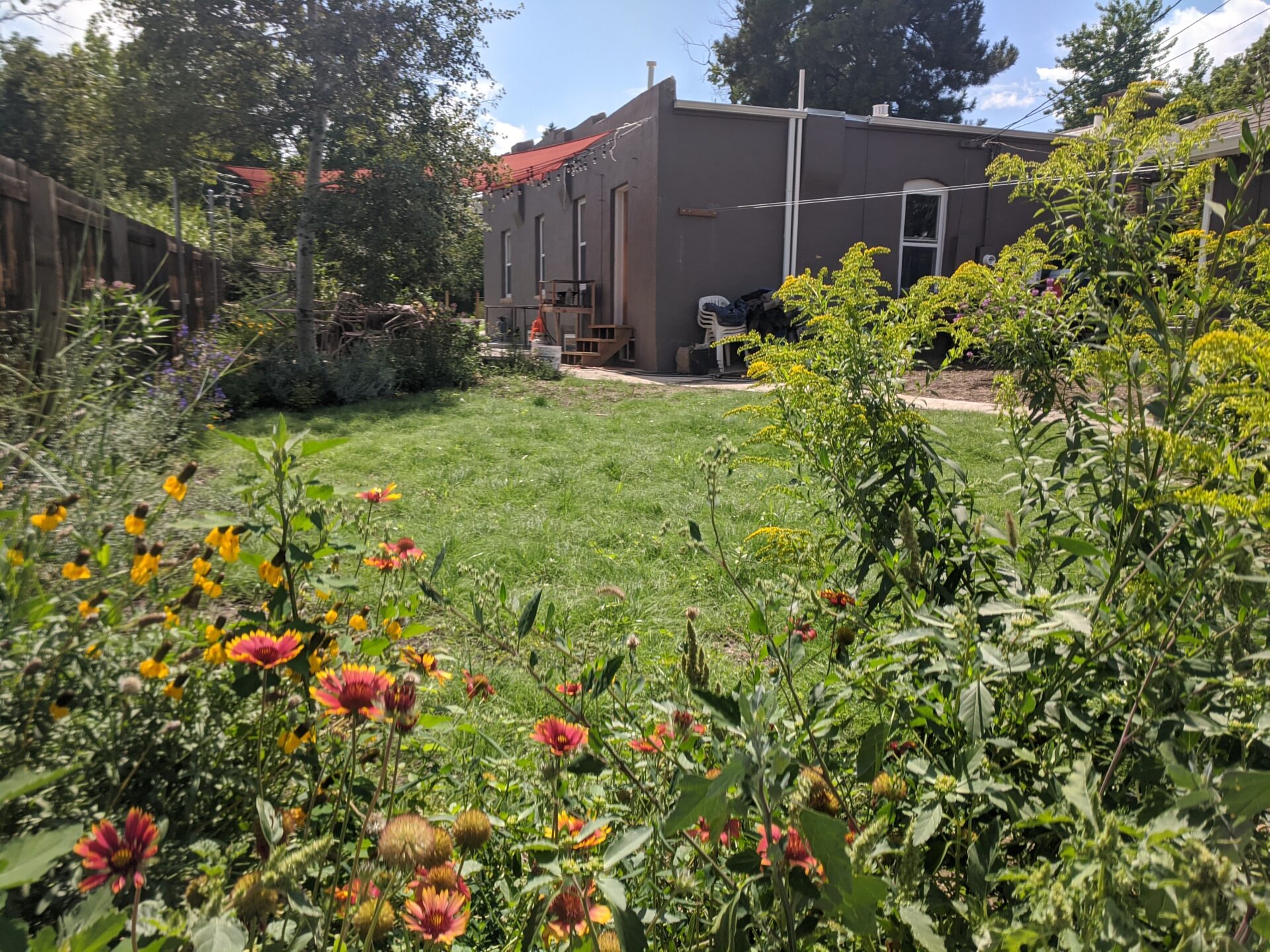
RLD can help you:
- plant beautiful native plants that restore habitat for our local butterflies, bees, birds and other wildlife;
- design different parts of your yard for play, relaxation, gathering, and other uses;
- build a perennial “food forest,” medicine garden, or regenerative veggie beds;
- cultivate a low-water and low-maintenance yard via native xeriscaping; rainwater harvesting; water-wise irrigation; or replacing a typical lawn with a xeric no-mow lawn;
- add features like crevice gardens, desert gardens, or nature play areas;
- build a Habitat Hero Garden or a Certified Wildlife Habitat.
I can’t tell you how much we liked working with Eryn (of RLD). She provided an incredible experience from start to finish. She created a native habitat that would thrive in our front yard while also taking into consideration our personal tastes and what we wanted to attract (e.g., I wanted lots of butterflies and hummingbirds!) I loved being a part of the installation and was able to learn so much about gardening and Colorado landscapes.
Eryn’s work isn’t done after installation. She has provided so much detailed information on caring for our front yard through each season and checks in regularly. It’s so evident how much she loves her job and cares about these spaces. Working with Eryn is an investment in your space and in encouraging the right kind of ecological growth.
Our front yard is bursting with beautiful, flowering plants, grasses, and shrubs, and the colors make many neighbors stop and admire it any time of the year. Best of all, it’s so easy to maintain and requires very little water. We definitely recommend Eryn and her team at Restorative Landscape Design!-Lauren G.
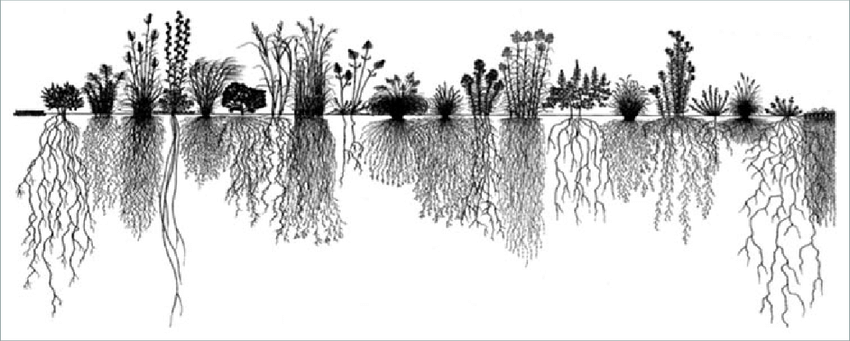
Why are native plants important?
Most herbivorous insects (insects that eat plants) can only eat plants that they’ve co-evolved with. It’s the same story with pollinators; many of them can only utilize the nectar or pollen from certain local flowers. So over millions of years of evolution, pollinators and other insects worldwide have become interdependent with plants that are native to their bio-regions. When there aren’t enough native plants to feed our native insects and pollinators, this affects the whole food chain: birds and other wildlife that eat insects; the creatures that eat those creatures; the plants that rely on those birds or insects for procreation; etc..
Here in North America, about 80% of suburbia is landscaped with plants from Eurasia, with over 40 million acres of American soil dedicated to European bluegrass lawn. To local insects, suburbia is a veritable desert – which is likely the biggest reason why insect, bird, and wildlife populations have been plummeting worldwide, as human-centric landscapes and industries spread to every available corner.
Nature is no longer “doing just fine out there.” Pollinators, other insects, and the birds that eat insects are vanishing, everywhere. 40% of native bees worldwide are in danger of extinction right now. Here in the U.S. grasslands, we’ve lost more than 40% of our birds since 1966.
Protected wilderness areas aren’t enough to preserve our ecosystems, because they’re small and disconnected. Only 12% of American land is protected wilderness, and only 3-5% functions as undisturbed habitat for wildlife. We need to restore native habitat in our urban and suburban areas in order for the web of life to survive. Sure, we can’t restore habitat for mountain lions or whales in our backyards, but we CAN coexist with pollinators, birds, and other foundational members of the biosphere.
Planting native plants and grasses in your yard makes a huge difference for local pollinators and birds. Local butterflies and bees depend on native grasses and wildflowers, and local birds feed on native plants and the bugs that live in them. Each part of the ecosystem – overstory and understory trees, bushes and flowers, grasses and groundcovers, and the many species that are interdependent with them – has a role to play in holding our local environment together.
If you choose the right local plants for your yard, they will need little-to-no irrigation or maintenance in the long term. Flowers that thrived in the small-grass prairie here, before Denver was colonized, still flourish here without supplemental irrigation or special soil. Landscape irrigation accounts for 40% of urban water use in the urban Front Range, which is primarily due to non-native bluegrass lawns. Native grass lawns or wildflower-filled native meadows, on the other hand, require little-to-no water, mowing, or fertilization.
Restorative Landscape Design is a terrific company staffed by experts who deeply understand the natural environment. From start to finish, I enjoyed working with Eryn Murphy and her highly skilled team. I met Eryn at a training session held by Denver Audubon on how to create bird-friendly gardens, where Eryn presented to the class. Later Eryn helped me take out my front lawn, conceptualize better water flow on my property through use of swales, and identify plants that are native to this area. We prioritized plantings that would benefit birds and other pollinators. We included berry-producing shrubs such as currant, snowberry, holly and kinnik-kinnick, as well as flowering plants like hyssop, wild geranium, columbine and penstemon, and a seed-producing native grass called prairie dropseed. All of these plants benefit other life forms that are native to this area. Most importantly, Eryn also kept the project’s costs economical, so that I could afford to go ahead. The finished garden is a joy to behold, and I can’t wait to see how it flourishes in the years to come. It makes me happy every time I see what is now growing there, thanks to the impeccable work done by Eryn and her team. I feel lucky to have been able to work with them to create a landscape that can help restore a small part of the natural world.
-Helen T.
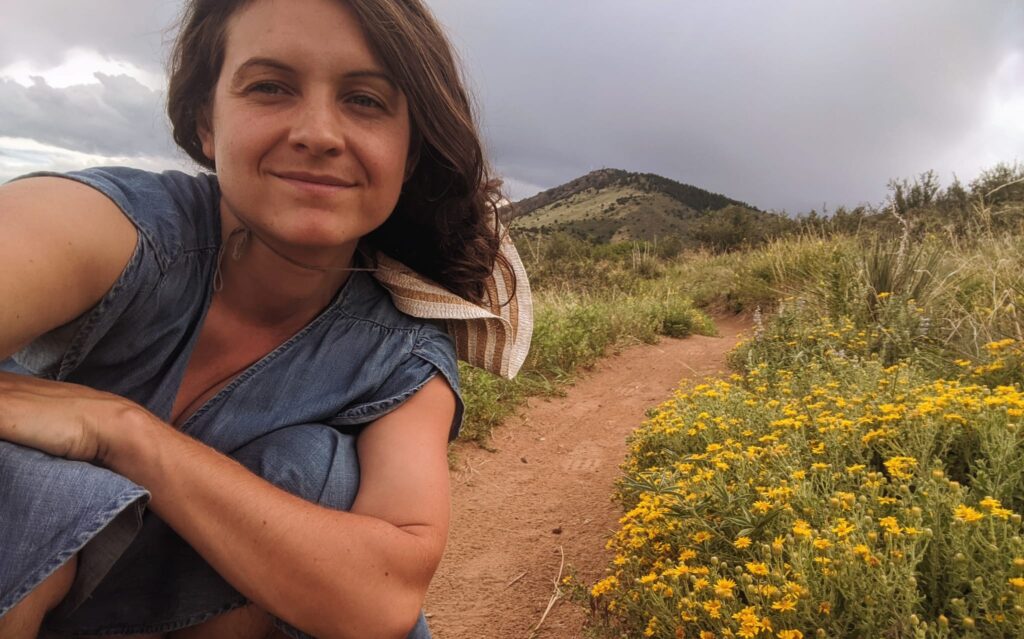
- Do you do labor and maintenance too, or only design?
We do it all. We started as just Design, but now our name should really be “Restorative Landscape Design and Install.” It’s long enough already, though, huh?
Our business is designed to be flexible so that we can help folks with diverse needs. You can hire us just for design/consultation/planning if you’d like. For the installation/labor, we can:
- give you a quote for it,
- support you in DIYing the project,
- collaborate with a landscaper you choose in your neighborhood, or
- Rally a small army of helpers to help you install your landscape, so you won’t break your back or your wallet. (See: “DIY with Help.”)
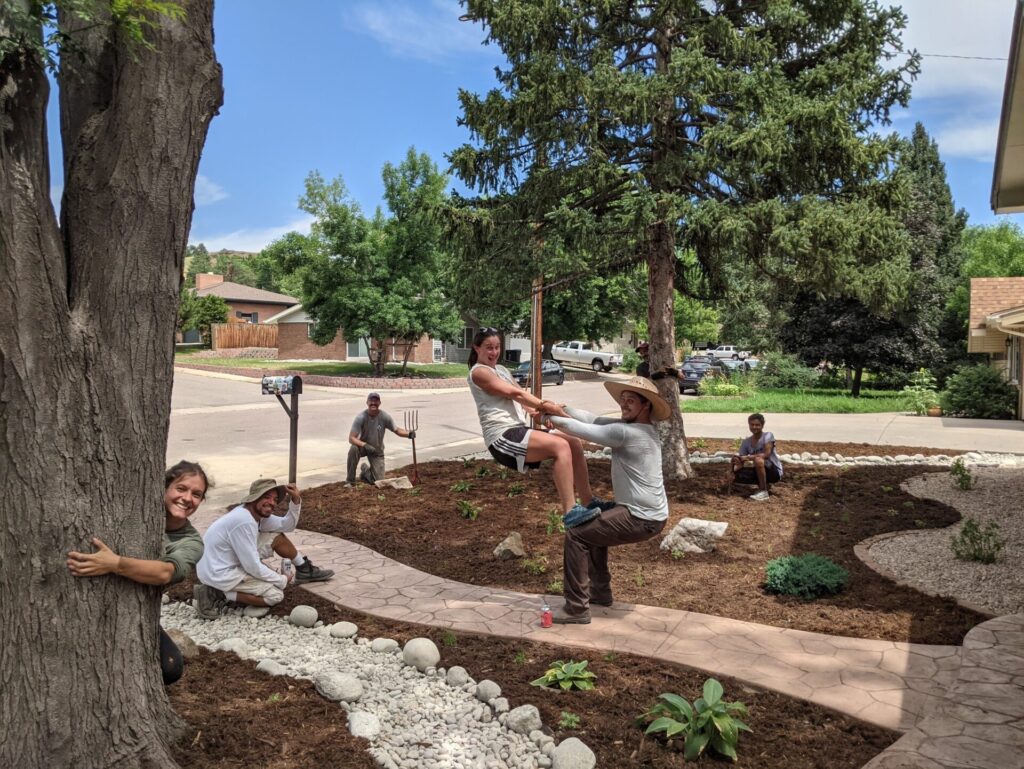
How to Get Started:
We often start with a free phone consultation, so we can talk about your needs and how the process works.
After that, the first significant step is a site visit. This is paid. Site visits are a mix of exploration, assessment, education, and dialogue. We’ll map out the needs and opportunities of the different spaces in your yard; discuss your capacities and priorities; listen to your ideas and give you ours; and talk about how we might best support you and what strategies we’d recommend. We’ll also pause to listen to the land.
By the end of our time together, you should have a general vision for the site design and implementation. We’ll either email you a quote afterwards, or share notes and resources to help you take it forward on your own.
Every client is different. You may have a big vision that we can bust out all at once or break into a timeline. Alternatively, you may just make one small change at a time, keeping pace with the dialogue between your household and your yard. However things unfold, we want to work with you instead of designing and installing the landscape entirely for you, so that the process is more meaningful for you.
Contact us to get started!
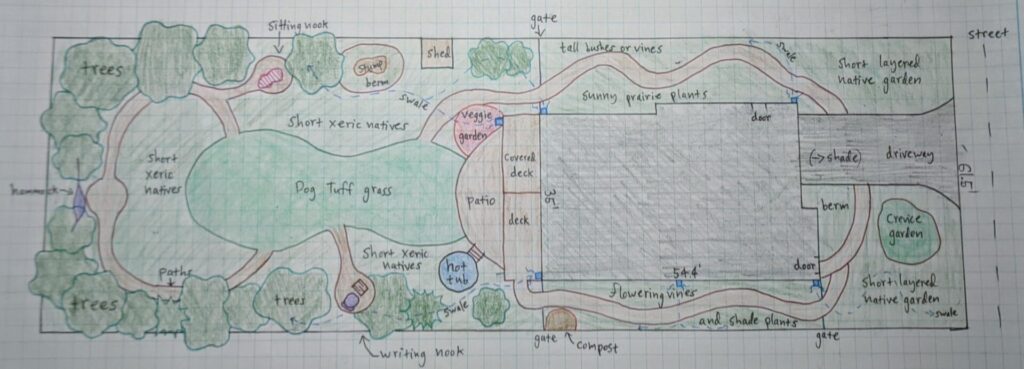
We loved working with Eryn! She helped us create a landscape design that works with our lifestyle and values. Taking care of our yard will now require less watering, time, and work, and it’s also way better for the environment. We love it!
-Jess and Ben
Typical Costs and Process:
The initial site visit usually takes 1-2 hours, depending on the size and scope of the project. Site visits are paid ($100/hr, often shared between Eryn and other attending team members).
After the site visit, you choose what you want our help with, and we will send you a quote. Most clients spend around $1000-2000 on a customized package of services that includes consultation, landscape design sketches, plant selection, planning, and materials/plant sourcing.
You can also hire RLD hourly; for example, just for a few hours of consultation.
-
- Most “DIY with Help” clients spend $7-12k on an average yard transformation – around $4-6 per square foot. We’ve designed this option because we believe ecological landscaping should be affordable. This includes design, planning, sourcing, delivery, materials, labor, and supervision for a simple landscape, but does not include extras like professional-grade paths or stonework.
- People who want to DIY the work can spend much less, under $5k.
- Folks who hire RLD to do the installation usually spend $15-20k for simple single-yard installs – around $7-10 per square foot. That range doesn’t include extras like patios, sprinklers, or water features; however, through our partnership with our subcontractor Wild Rose Landscaping, we can handle all of that and more.
- Crevice gardens can vary from $500-10,000, depending on the size and density.
- Clients who hire their own install landscapers typically spend $15-50k on a single-yard install ($8-20 per square foot). RLD collaborates with your chosen landscaper to make sure everything goes smoothly. We have recommended contractors across Colorado.
* Eryn keeps a portion of her time budgeted for pro-bono and discounted work for low-income clients, communities, education opportunities, and non-profits. If you can’t afford to work with us at $100/hour, talk to her and work it out! She gets especially excited about low-income community projects.
For more info, including our service range, check out the FAQ.
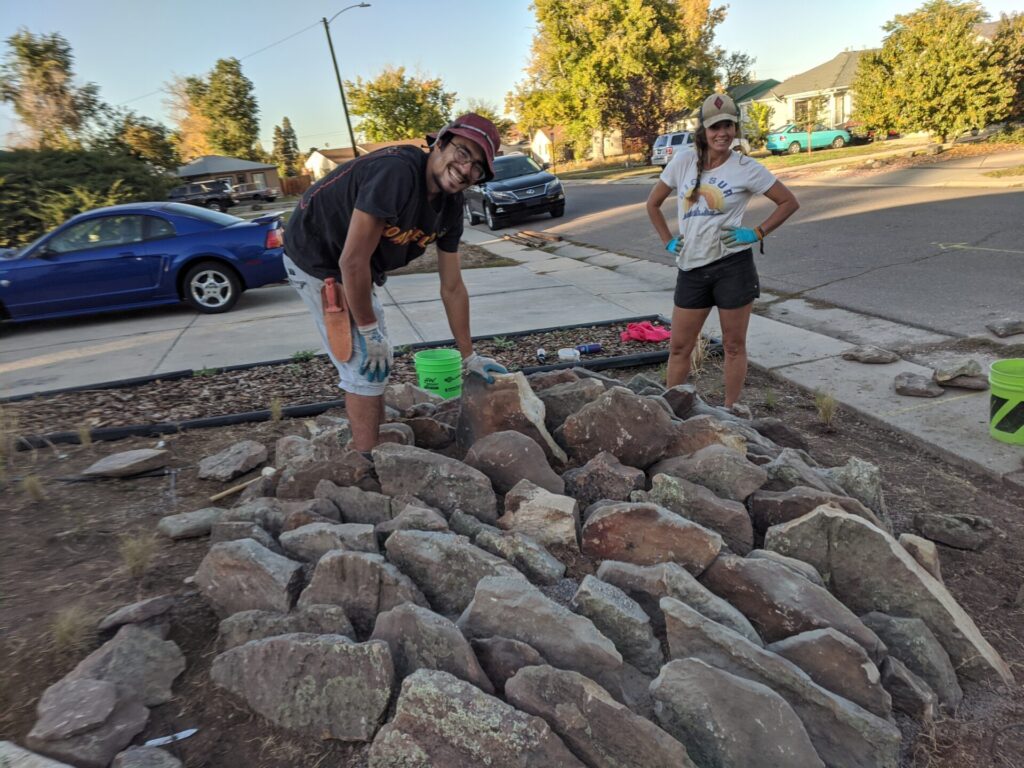
“It was through her actions of reciprocity, the give and take with the land, that the original immigrant became indigenous. For all of us, becoming indigenous to a place means living as if your children’s future mattered, to take care of the land as if our lives, both material and spiritual, depended on it.”
― Braiding Sweetgrass: Indigenous Wisdom, Scientific Knowledge and the Teachings of Plants
